Two weeks ago the Government’s Major Projects Authority published its second assessment of the state of its project portfolio. It provides a welcome increase in transparency, and allows us to assess whether the Government can bring in projects on time and on budget.
What is the Major Projects Authority? The Major Projects Authority (MPA) was established in March 2011 to improve the delivery of major government projects, ranging from reforms like automatic enrolment into workplace pensions, to internal departmental change programmes like shared service centres, and large infrastructure projects like Thameslink. The MPA provides challenge and support to the projects included in the portfolio and publishes the cost, timescales, and delivery confidence assessments of these projects in the form of a Red-Amber-Green (RAG) scheme. Its latest report assesses projects up to 30 September 2013. Below we set out the picture it offers of progress – or lack of it. A bigger portfolio The portfolio has grown somewhat in the last year: the 2013 annual report included 191 projects, while this year’s has 199. This reflects the inclusion of 47 additional projects in the portfolio and the exit of 39 projects from the portfolio. Of these 39 projects, some were completed, some moved into business-as-usual phase, some were halted, and others are now reported as parts of other projects. Those projects have a whole-life cost of £488bn. More, new projects mean less confidence Between 2013 and 2014, the portfolio has shifted toward lower confidence assessments, with an increase in the proportion of amber and amber/red projects. This is largely because of the projects newly included in the portfolio, which are further away from completion and therefore have lower rankings. Roughly 35% of all projects are rated green or amber-green, which is a decrease of 8% from the previous year. 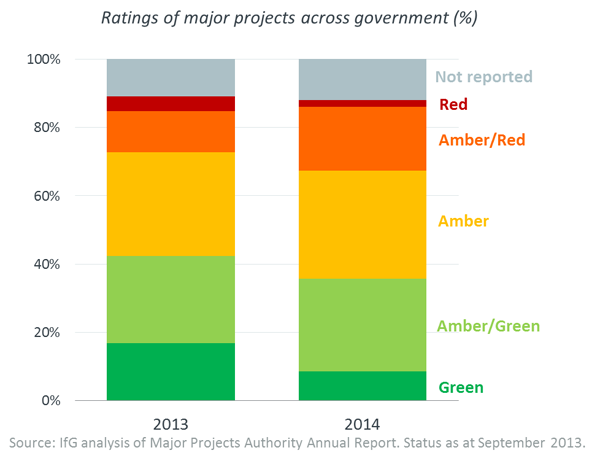
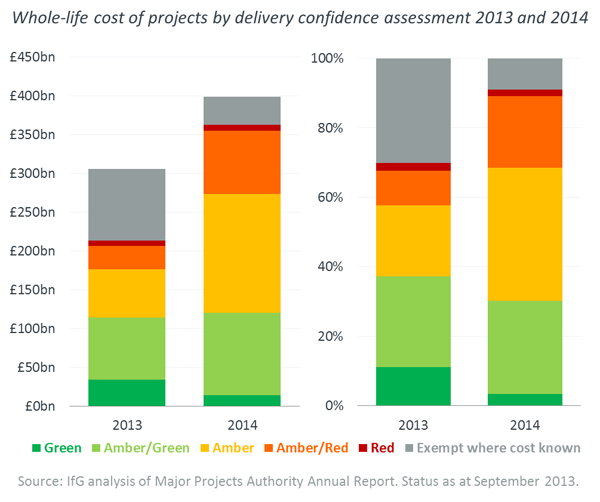
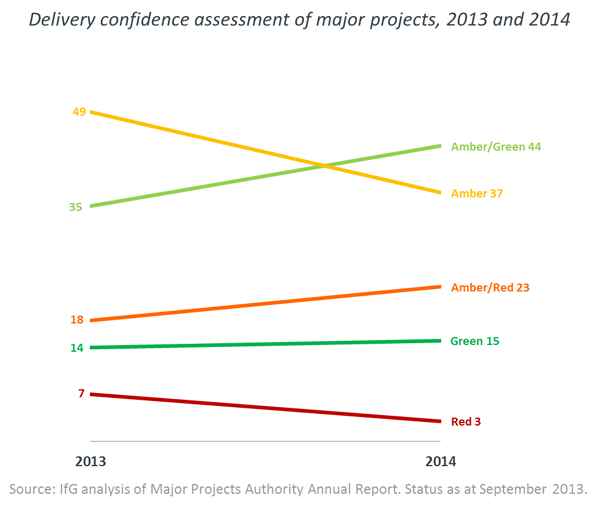
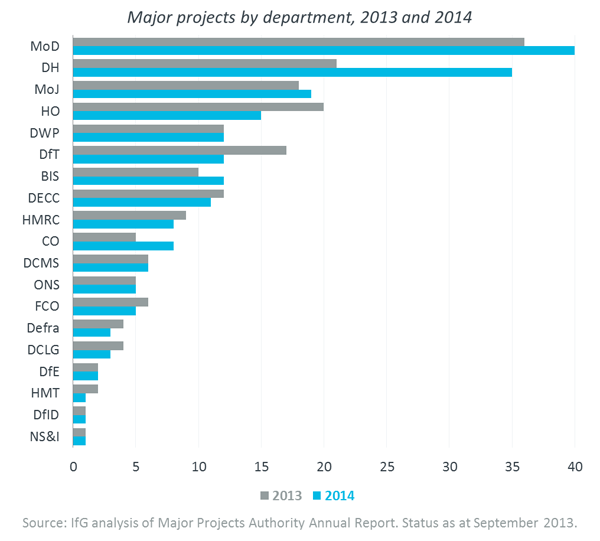
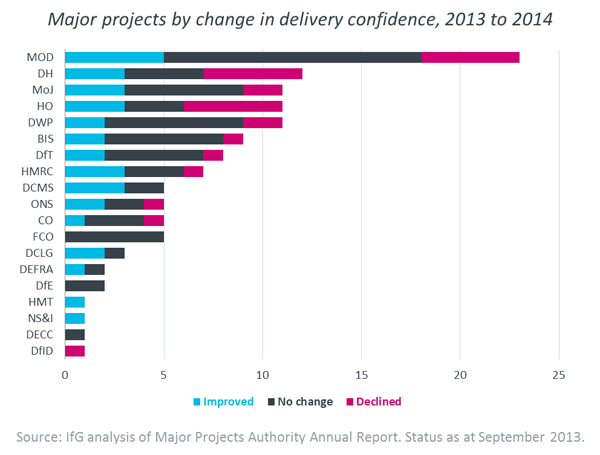
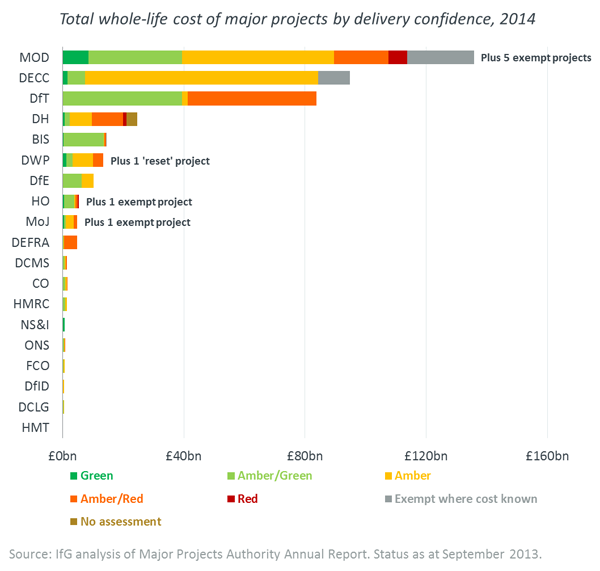
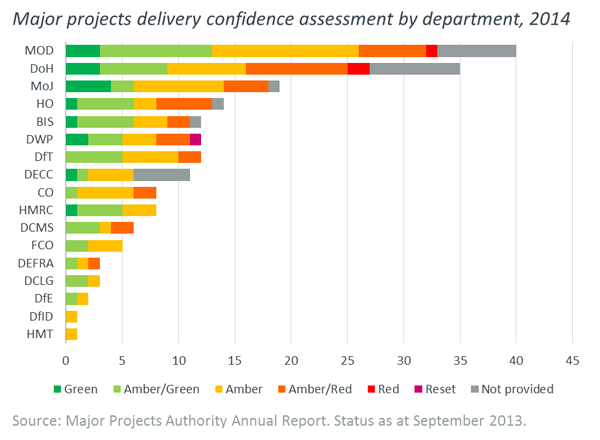
- Topic
- Public bodies Policy making
- Administration
- Cameron-Clegg coalition government
- Department
- Ministry of Defence
- Publisher
- Institute for Government